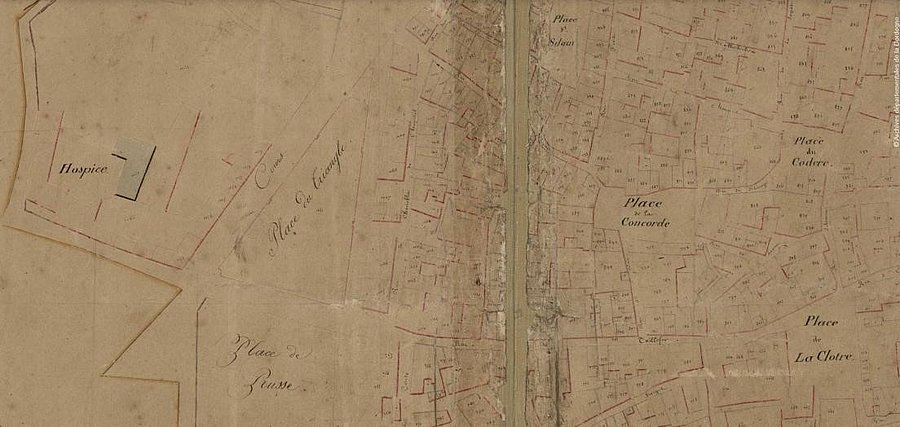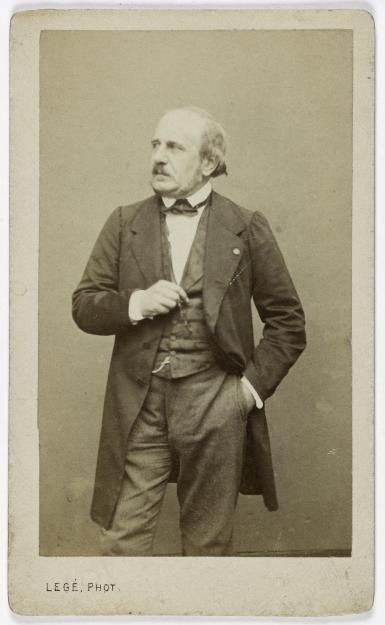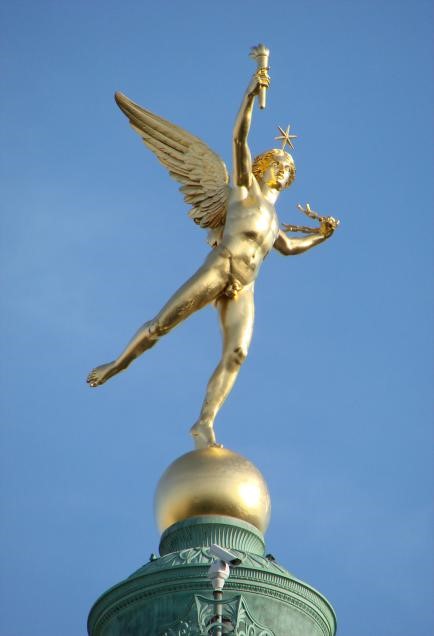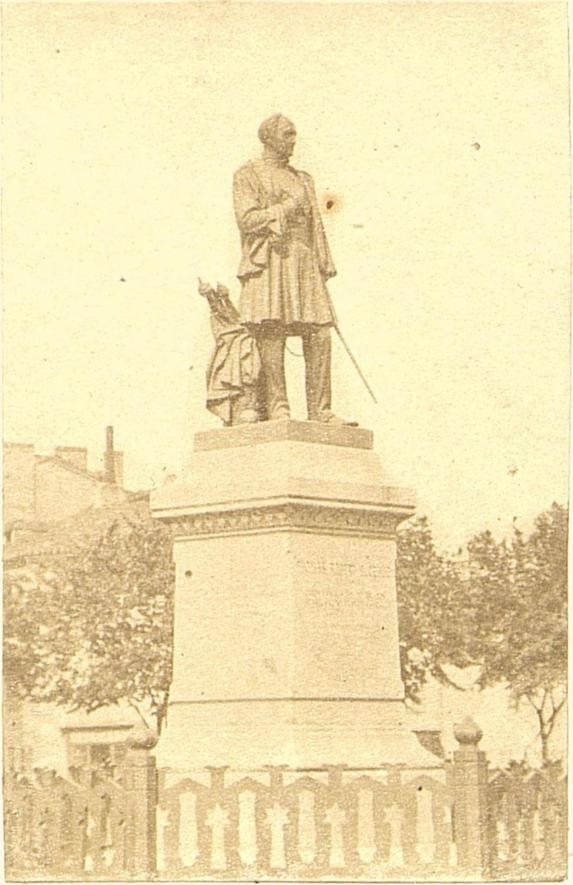Place Bugeaud (EN)
A characteristic shape
Historic square of the city, the current Place Bugeaud was located outside the walls of the Puy Saint-Front. Paved in the 16th century, it hosted a regular fair. Named Place du Triangle at the end of the Ancien Régime, because of its characteristic shape, it was briefly called Place de la Liberté et de l'Égalité from 1795, during the First Republic (1792-1804). It then regained its name of Place du Triangle, at a time when it was at the heart of urban development, in line with the boulevards that were being built in the 19th century. It was levelled in 1849 and it is on a renovated square that it is proposed to install a statue of Thomas Robert Bugeaud (Limoges, 1784 - Paris, 1849).

The bronze statue of Thomas Robert Bugeaud
A work by Auguste Dumont, recognized sculptor
This work, kept in public space as a witness to its time and the colonial past of France, is the work of a renowned sculptor. It is listed on the inventory of the MAAP (Museum of Art and Archeology of Périgord) and was commissioned from the Parisian sculptor Auguste Dumont (1801-1884) as part of a national subscription. Dumont was then a recognized sculptor: Grand Prix de Rome in sculpture in 1823, elected to the Institut de France in 1838 and appointed professor at the Ecole des Beaux-Arts in Paris the same year of the sculpture's inauguration. He is notably the author of the Génie de la Liberté which has topped the Colonne de Juillet, Place de la Bastille in Paris, since 1835.
According to the model sculpted by Dumont, two bronze statues of Bugeaud were made in Paris by the founders Eck and Durand. The first was inaugurated on August 15, 1852 in Algiers, dismantled and returned to France after Algeria's independence in 1962, then installed in Excideuil in 1967. The second, unveiled on September 5, 1853, is installed here in Périgueux, and gives its name to the square since then.


Bugeaud, a reprehensible man, linked to the colonial history of France
Honored by the erection of this statue commissioned thanks to a public subscription and inaugurated on September 5, 1853, Thomas Robert Bugeaud, Marquis de La Piconnerie, Duke of Isly, is a French soldier from a noble family from Périgord Vert. Having begun his military career at the age of twenty under the First Empire, and then experiencing a meteoric rise, his loyalty to Bonaparte during the Hundred Days (Cents-Jours) in 1815 led to him being kept away from the army during the Seconde Restauration (1815-1830). It was during this period that he retired to his Périgord lands, to his property of “La Durantie” in Lanouaille, where he developed the family farm, while getting involved in local political life.
Bugeaud returned to military service under the July Monarchy (Monarchie de Juillet, 1830-1848). Nominated governor-general of Algeria in December 1840, General Bugeaud's mission was to “pacify” this colony. In reality, he will initiate a total war there, particularly deadly for the indigenous populations, and marked by numerous destructions of villages and oases. Faced with multiple resistance, Bugeaud declared to the officers he commanded: “If these rascals [the Arabs] retire to their caves, (...) smoke them like foxes. » Hence the terrible enfumades committed against different tribes.
Appointed Marshal in 1843, Bugeaud returned definitively to France in 1847. He was ready to do anything to defend the July Monarchy during the February Revolution of 1848. As enemy of the Republic, he was certainly politically beaten but he did not give up since he wrote a treatise on counter-revolutionary warfare in an urban environment entitled De la guerre des rues et des maisons (“On the War of the Streets and Houses”, 1849).
Bugeaud died of cholera at the beginning of the Second Republic (1848-1852), after being named Commander-in-chief of the Army of the Alps by Louis-Napoléon Bonaparte (1808-1873), future Napoleon III. His local rural roots and the national influence of its military successes, illustrated by its Latin motto “Ense et Aratro” (“by the sword and by the plow”) readable on the right part of the pedestal, explain the glory of which some of his contemporaries will crown him.

Keep your eyes peeled!
Observe the care that Auguste Dumont took to transcribe the physiognomy of Marshal Bugeaud...
Dressed in the military costume that he wore in Algeria, and which here recalls the main field in which he distinguished himself, Bugeaud looks into the distance with a proud, cold and determined look. With a slightly pinched grin making him appear intransigent, the way in which Dumont treated the Marshal's face thus reveals the ruthless nature of the character that current historiography is careful not to ignore.

